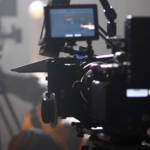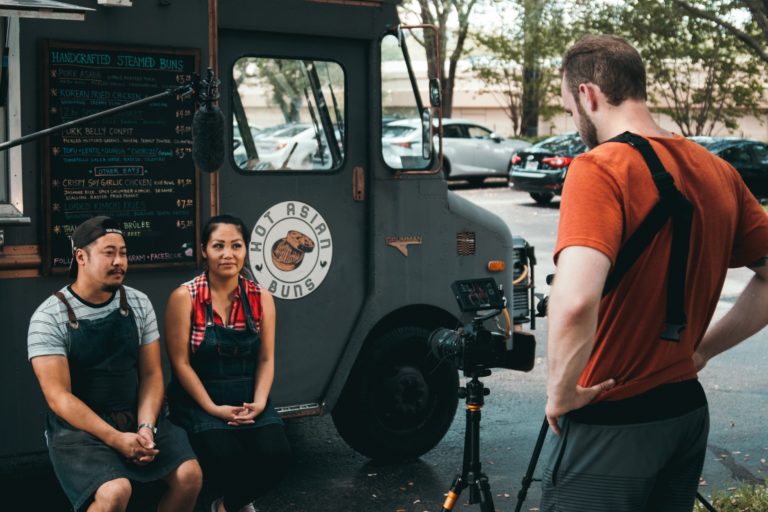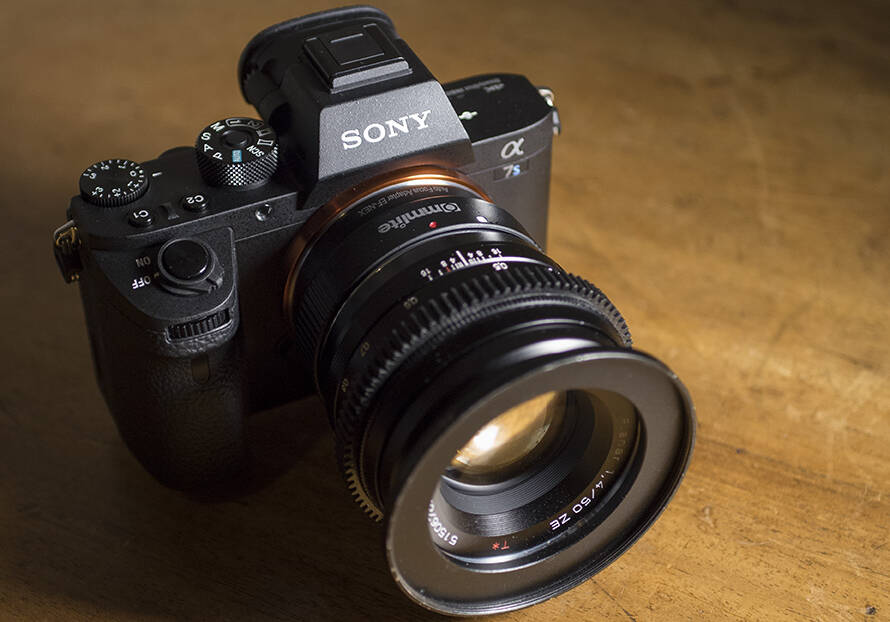In a time when DSLR’s were just starting to get video features and Mirrorless cameras were still in their infancy, ProSumer, Pro, and Cinema cameras were still at the forefront if you wanted to be an Indie filmmaker. While times have changed drastically, in the days of yesteryear, if you wanted a camera, your options were much more limited and your decisions had to be much more strategic. As the days of Full frame Mirrorless cameras and video focused DSLR’s come to maturation, many of these older video cameras are dropping in price like crazy; Partly due to the lack of interest, but also because there isn’t much need for such a device in today’s climate. One of these such devices is the Sony NEX-FS100.
For some, these could be the exact devices they’re looking for.
In many ways, this camera seems to be the red headed step child of Sony’s early 2010’s video lineup. It’s a camera shrouded in mystery, not a lot of information, minimal following, and next to no interest. I ask myself why such a device ended up in the purgatory of prosumer cinema cameras, and wonder if, perhaps, there is a way out. To understand why this camera was left in such a state, we must first understand what it is and what it was supposed to be.
What is the Sony NEX-FS100
For all intensive purposes, the NEX-FS100 is a cinema camera. It’s got almost all of the buttons, bells and whistles, and everything else a cinema camera should have; well, it’s missing a few things, but that’s for the next paragraph. The FS100 has full manual control with a button for each desired action. You can throw just about any lens at the thing, and it’ll take any microphone requiring an XLR and phantom power.




What was the competition?
At the time of its release, there really wasn’t all that much available that was similar to this camera. Not only the feature set, but the price made this camera stand out above the rest. The only other cameras even in the same realm of the FS100 were the Canon C100 and the Panasonic AF100. The next step up would include sony’s own PMW-F3 and later the FS700. Taking another step further and you would see the Sony F65, Red One, and the Arri Alexa, but now we’d be talking the big bux and massive production budgets.

Who is this camera for?
As the years have passed, I believe this has changed and the use case is now much different than it once was. While this camera would have been great for Indie filmmakers and education centers, I believe it would now be exceptional for documentaries and sit-down interviews. That’s not to say this still wouldn’t be a great camera for Indie filmmakers, there is just so many more options out there in the form of Mirrorless and DSLRs that could do a better job. If you need minimal hardware, setup, and the need for onboard sound(Let alone two XLR’s), this would be a great solution.
Why did it flop?
Personally, I believe this is a great camera. It has so much to offer nowadays, but at it’s release it had just a few shortcomings that led to its ultimate demise. With the onset of Mirrorless cameras, we’ve seen a huge influx of accessories to support these systems. One of those accessories includes the development of cheap ND filters, specifically circular variable ND’s. Looking back in the early 2010’s these were not a thing, and if they were, they were outrageously expensive and out of most consumers reach. What I’m getting at is without the inclusion of built-in ND filters, there was a requirement for expensive clip on ND’s where other cameras like the F3, C100 and AF100 all had them built in.
The second issue comes down to the media itself and how it’s recorded. With this being classified as a Cinema camera, you expect to be able to capture the best picture possible. While the sensor itself was great, the codec left something to be had. In other cases the solution would be to connect up an external recorder through SDI, or noways HDMI and record a 10-bit 4:2:2 image or better, but with this camera you were limited to an 8-bit 4:2:2 image through HDMI of 8-bit 4:2:0 internally. This can work, and I’ve had great success going this route, but with any heavy color grading, say ByeBye to a decent looking image.
Sony NEX-FS100 Specs
Sensor
- Size – “Exmor” Super35 CMOS Sensor
- Effective Resolution -Approx. 3,370,000 pixels
Screen
- 3.5 inch-type, XtraFine LCD, approx. 921,600 dots(1920 x 480), 16:9 aspect ratio
Recording Media
- Memory Stick PRO Duo(Mark2), Memory Stick PRO-HG Duo,Memory Stick PRO-HG Duo HX. SD/SDHC/SDXC Memory Card (Class 4 or higher)
- SSD/HD – HXR-FMU128
Max Bitrate
- 28Mbps
Inputs/Outputs
- Audio input – XLR 3-pin (female) (x 2), LINE/MIC/MIC +48 V selectable
- Composite output – RCA Type (x 1)
- Audio output – RCA type (CH-1,CH-2)
- Component Video Output – RCA Type (x 3) via Mini-D jack
- USB – USB device, mini-AB/Hi-Speed (x 1)
- Headphone output – Stereo mini jack (x 1) ø3.5mm
- Remote – Stereo mini-minijack (ø2.5mm)
- HDMI output – HDMI connector (x 1)
Resolutions
- 1080P – 60p/60i, 50p/50i, 30p, 25p, 24p
- 720P – 60p/60i, 50p/50i, 30p, 25p, 24p
Bit Depth
- Internal – 8Bit 4:2:0
- External – 8Bit 4:2:2 (8Bit4:4:4 upconverted from 4:2:2 reported with certain recorders)
My thoughts on the Sony NEX-FS100
Honestly, I love this camera. It does what I need it to do, and with the right accessories, lighting and know-how, it can be great. With that said, I am no expert and I’m not producing Hollywood films; In fact, I use this for YouTube content, Over the top home videos of my kids, and eventually music videos and weddings, but, at under $450 for a low hour camera, you can’t really go wrong when it offers so many features and a little bit of joy to my creativity.
FS100 Picture Profile(AB_RANGE2)
Black Level – +7
Gamma – Cinematone1
Black Gamma – HIGH,+7
Knee – Manual, 90%, +2 (Modified from the normal AB_Range which is 75%, +3)
Color Mode – Cinematone1, Level 8
Color Level – -7
Color Phase – 0
Color Depth – R+1, G+5, B-3, C-0, M+1, Y+6
WB Shift – LB-CC, 0,0,0,0
Detail – -7, OFF, 0, TYPE3, 7, 0, 0
I prefer to use the ABLE Cine profile AB_RANGE2 or a slightly modified version of it and have found I have the most consistent results with this in terms of grading and DR. This is even over the popular G-LOG Ultimate.





1 Comment
Derrick
Hi Patrick. I’ve watched your videos and just read this article. Wow, that article is some great information! I really appreciate your knowledge base. I bought my first fs100 one week ago at a pawn shop for $350. It came with that silver 18-200 lens. New that lens is $800! Now I’m understanding what a cinema camera is. Interesting how everybody loves the image. I am about to copy your picture profile and capture some footage tonight. I’m really excited about owning an FS100. Thanks for sharing!
Derrick